Smoked catfish is a delicacy that is enjoyed all around the world. But it only tastes good fresh. So, How to preserve smoked fish so that it tastes fresh throughout its shelf life?
Preserve Smoked Catfish –5 Essential Steps
- Safely transporting the catch – without rotting.
- Cleaning the catch – splitting and gutting
- Brining – also known as salting.
- Drying – air drying before smoking.
- Packaging – special moisture-proof packaging.
Is smoked fish preservation as easy as it sounds?
Read more to find out how to preserve smoked catfish!
Safely Transporting The Catch:
Compared to all proteins, fish decomposes the fastest. The minute it is taken out of its habitat – water, it starts to decay. Therefore once the catfish is caught, it is highly necessary to keep it under a controlled environment to keep it from rotting.
The fresher you keep your product, the better, smoked catfish preservation, will be carried out.
Every kind of fish has high amounts of enzymes present in its stomach that help with digestion, which activates as soon as the fish is taken out of the water. Instead of digesting food, it starts to digest the fish’s stomach. While we are still transporting the fish, the enzyme reaches its flesh, aggravating the decaying process. This is what causes that distinct fishy smell and also turns the flesh mushy.
There are uncountable bacteria present on the skin of the fish, which start to multiply rapidly once the fish is dead. These bacteria don’t cause any harm to the fish in water, but outside they can spoil the fish within days.
In order to avoid this, fish preservation and processing is as essential as fish mongering. Fishers hang their fishes on a stringer and leave it underwater. However, a more effective way of doing this is putting the fish in mesh baskets underwater, or, small wells with controlled temperature and growth checks.
Cleaning The catch
Before starting the cleaning process, it is necessary to kill the catch completely. An efficient way to do that is by using salt.
Since catfish is a freshwater fish, all it takes is a grain of salt to put an end to its life. Sprinkle salt on the fish and let them sit in a closed container for a while.
Be ready to hear the fish jump here and there, but that’s nothing to worry about.
Once the fish is dead, it’s time to clean it thoroughly. The cleaning process is dependent on the size of the fish and how you are using it. In most cases, scales and gills are removed, followed by the guts. If the size is big, the fish is split and filleted. Otherwise, they are used as a whole. However since catfish does not have scales, that makes the process a lot simpler.
Related posts: Top 5 Health Benefits of Catfish and Is Catfish A Good Fish To Eat?
Brining And Drying
The brining process or the salting of the catfish is a process that is used to lower the water content from the produce, which is essential for good smoking and preservation.
High water content means the smoked product will not be as crisp and shiny, instead of soggy or brittle.
The catfish is soaked in a saturated brine mixture, for 15 to 20 minutes. The brine mixture has more than 70% of salt concentration.
Now you must be thinking, brining might make the fish salty. The fish only takes up 2-3% of the saltiness, which makes it taste even better, and adds a top coat to the catfish, that gives it that nice gloss and keeps it from getting too soggy.
After brining the catfish in saturated brine water, the next step is to air dry them. This seals the brine over the catfish and keeps the outer surface of the fish, nice and glossy. It further reduces the chances of the fish turning brittle after smoking.
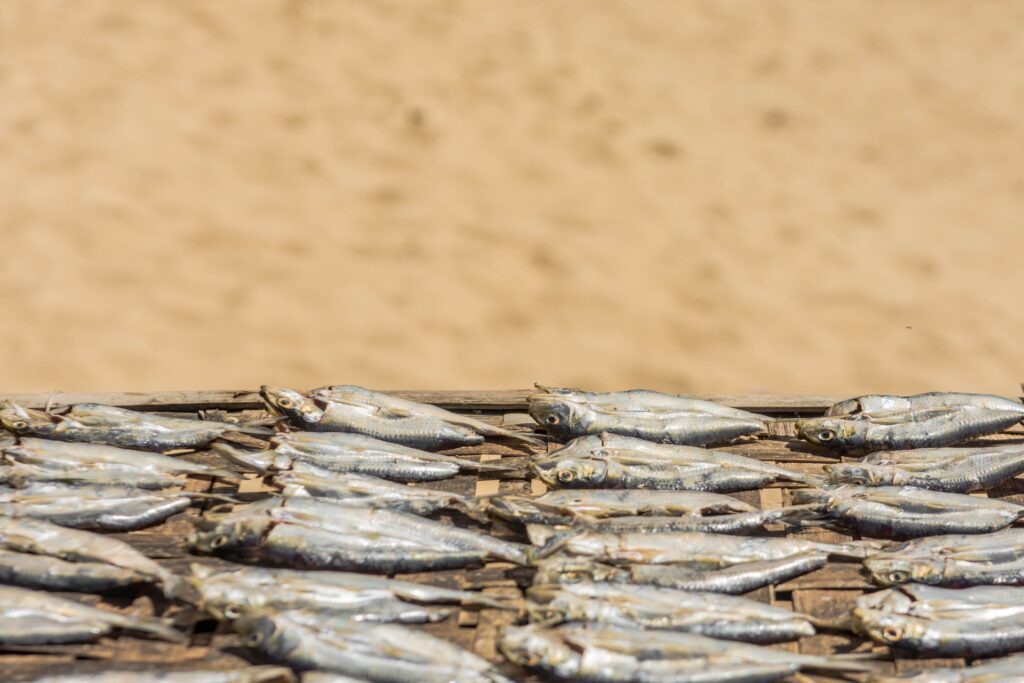

Usually, this process is carried out in the same place where smoking is supposed to take place. The fishes are either hanging on the line above the smoke or laid on frames. But with the smoke turned off.
This process is usually done under a shade, to prevent the catfish from being attacked by insects or other animals.
Smoking
The next step is smoking. There are two types of smoking that are carried out, for fish preservation – Cold Smoking and Hot Smoking.
Hot Smoking:
As the name suggests, in hot smoking, relatively high temperatures are used to smoke the catfish. The temperatures are kept between 70 degrees to 120 degrees Celcius (158 – 248 Deg F). Low temperatures like these, make sure that the outer layer hardens and turns into a covering, which protects the flesh from getting overcooked.
If high temperatures are introduced from the beginning, chances are the fish will start to cook before the covering has formed and as evident, will fall apart.
The process of hot smoking takes less than 6 hours. The results are delicious smoked fish with an extended shelf life.
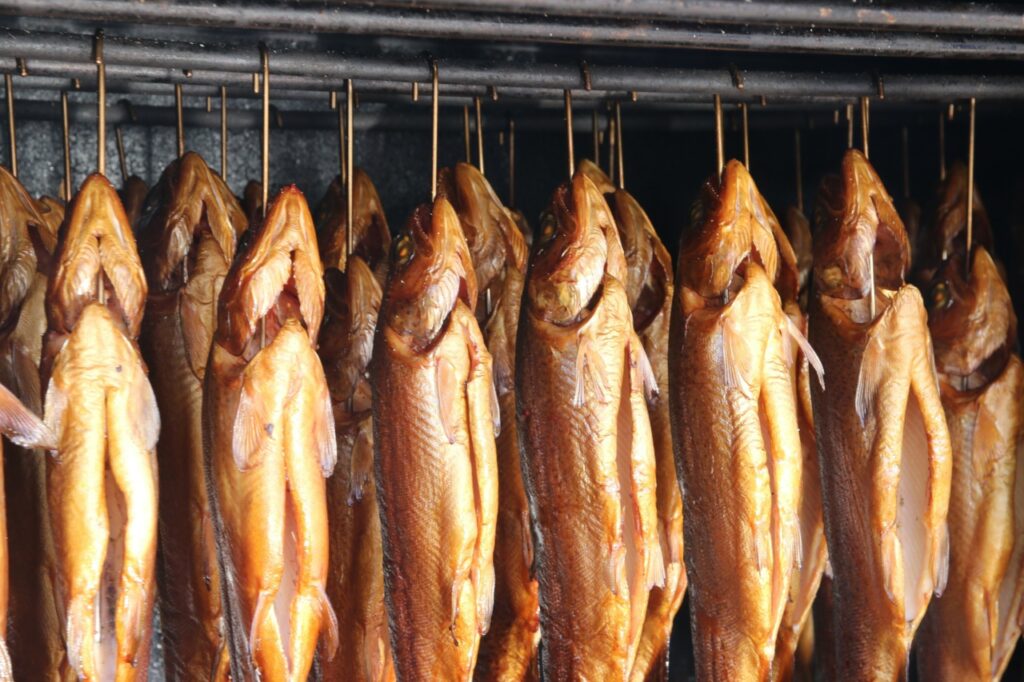

Cold Smoking:
Cold smoking is the process of smoking fish at relatively lower temperatures. This technique is only used in areas with freezing temperatures. The fish are hung over the smoke source at a certain, distance, and the temperature is kept at a low 29 degrees Celcius (84.2 Deg F).
By the end of the process, the temperatures are cranked to 35 degrees Celcius (95 Deg F), but nothing more than that.
Even after cold smoking, the product is immediately supposed to be kept under freezing temperatures.
Not only this, cold smoking requires strict quality control as the chances of failing are more compared to the hot smoking technique. There is a risk of spoiling the produce mid-procedure and also the risk of insect infestation.
That being said, the shelf life of sold smoked catfish is half that of hot smoked catfish. If not done right, the cold smoked fish will have the same shelf life as fresh fish -very short.
Smoking Methods:
Open fire:
Traditionally the fish is smoked over an open fire. A fire is started in an oil drum or mud-made structure. An oiled metal rack is placed over the heat. This method is practiced in many African countries where due to power supply problems fish has to be preserved without refrigeration.
According to The Fish Site, “smoking fish is one of the most important and efficient ways of preserving fish where refrigeration is not available“.
The fish are then laid, with some distance to ensure even smoking. The temperatures are kept low for the first few hours, and near the end of the process are turned high. The fish are rotated every few minutes to ensure better smoking.
The fuel used is either wood or charcoal. The quality of the fuel matters a lot as rigorous smoke-creating fuels like sawdust can cause high levels of polycyclic hydrocarbons.
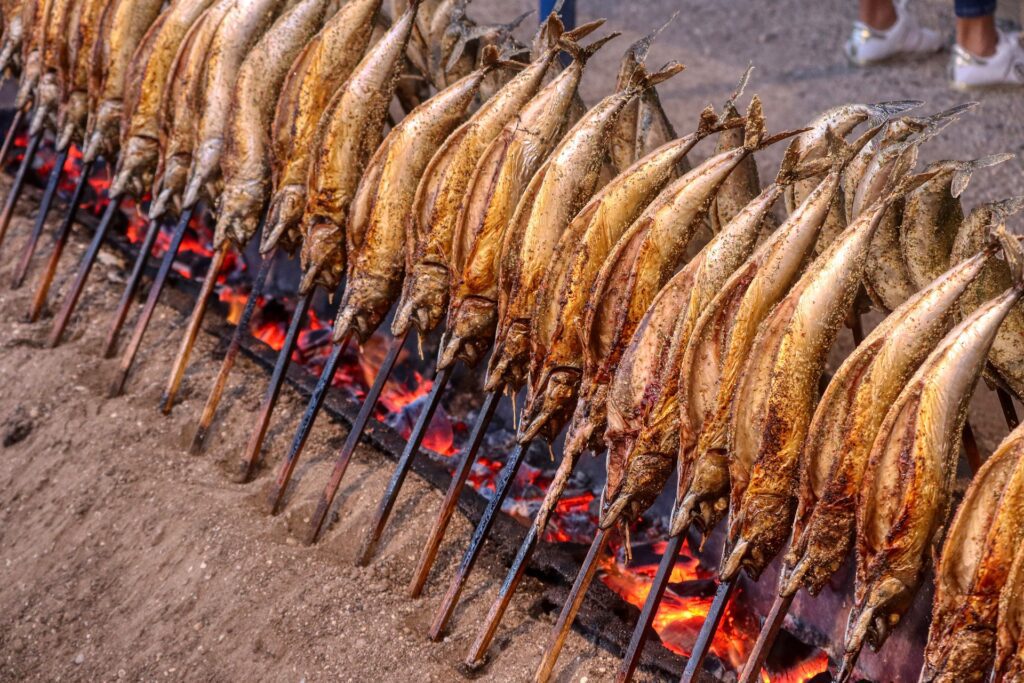

Oven or kiln:
Over the years, smoked catfish processing has also modernized. People now use ovens or kilns to smoke fish. Its main features include space, even smoking, hygiene, and fast processing.
This makes it a little more expensive than the usual method, but the fish is smoked better, which makes it last longer.
These kilns come with the options of gas, electricity, and fuel such as wood or charcoal.
They also have built-in thermometers for easy temperature control and fans for better distribution of heat and smoke.
The use is simple; these ovens are lined with metal racks.
Oil the shelves before placing the fish and crank the oven up, to your desired temperature and you are good to go.
Also, these kilns are environmentally friendly due to lesser smoke emissions. The YouTube video below shows a detailed hot smoking step in the process of how to preserve smoked catfish
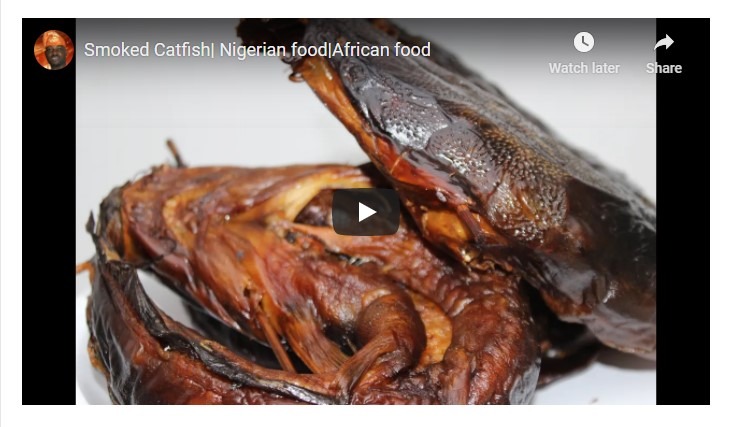

Packaging:
Smoked catfish packaging is a hard task.
Even when dried, the fish are susceptible to rotting, if not packaged well. Insect infestation, mould growth and breaking of fish are the three concerns one should take care of when packaging.
Breaking of Fish:
If you have smoked fish, you would know how delicate it is. Hence it is highly necessary to make packaging that will not distort its shape. A sturdy box is the best choice.
Insect or Animal Infestation:
Insects such as beetles and animals such as mice and rats all get attracted to smoked fish. If proper care is not taken and the packaging is not sturdy and seal-proof, these insects and animals can destroy the catch.
In such cases, the fish can be salted heavily to protect from insect infestation, or insecticides may even be used during the smoked fish processing.
Conclusion
Catfish in general is very easily spoilt once it is taken out of the water. That is why learning how to preserve the smoked catfish is essential to enjoying that delicious smoked catfish meal you love.
While there are a few crucial steps involved in how to preserve smoked catfish, the most important aspect of these steps is ensuring the fish remains in a good healthy condition throughout the processing period. This is key to avoiding contamination and increasing the risk of spoilage.
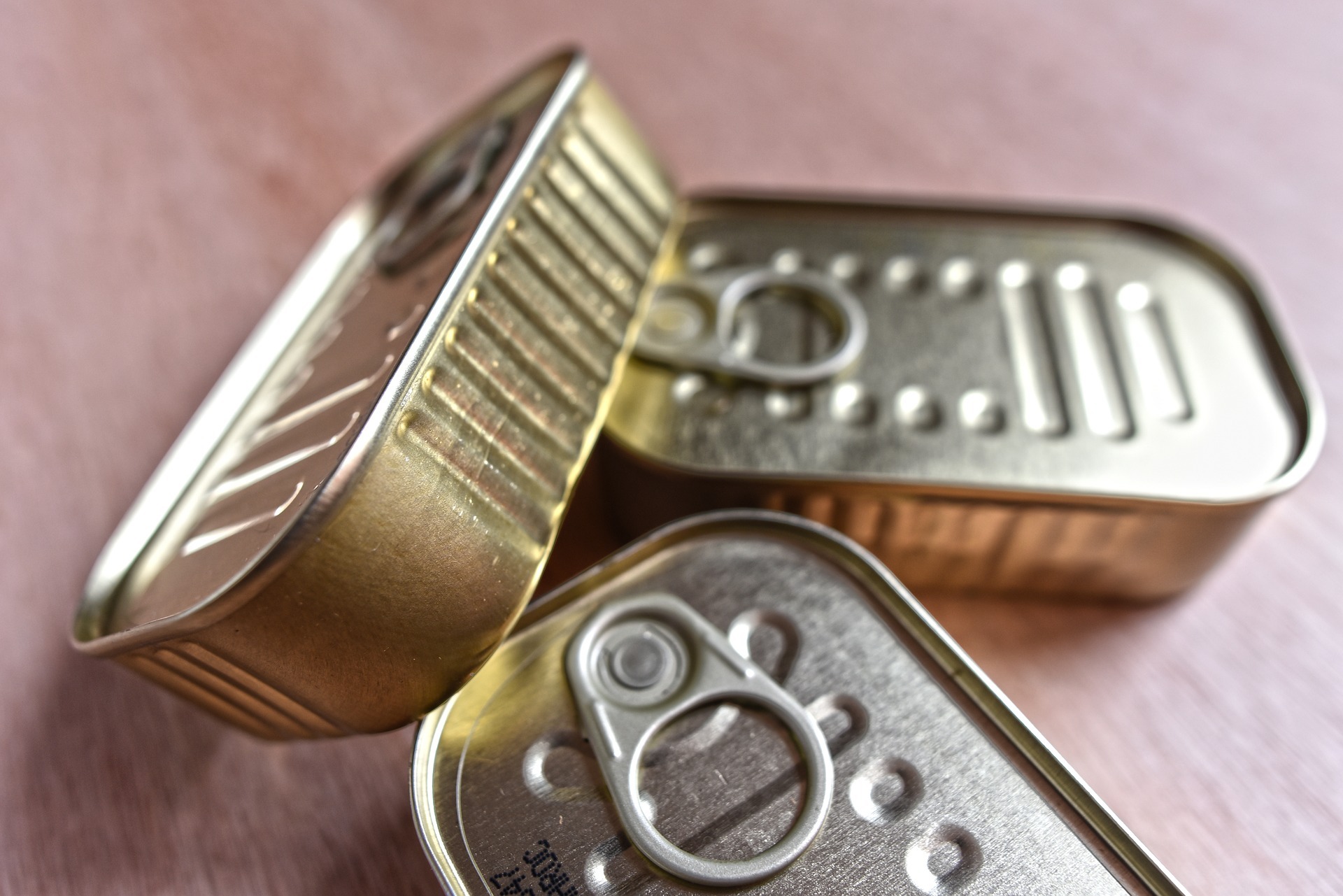




Very interesting process of learning smoked catfish business. Thank you for sharing this knowledge
Thank you, Martha, glad you learned something.
I’m always excited to learn from your articles and like always I’ve learnt something new from this; brining, I can’t wait to try it out.
Thank you for messaging me and I look forward to seeing more of these messages.